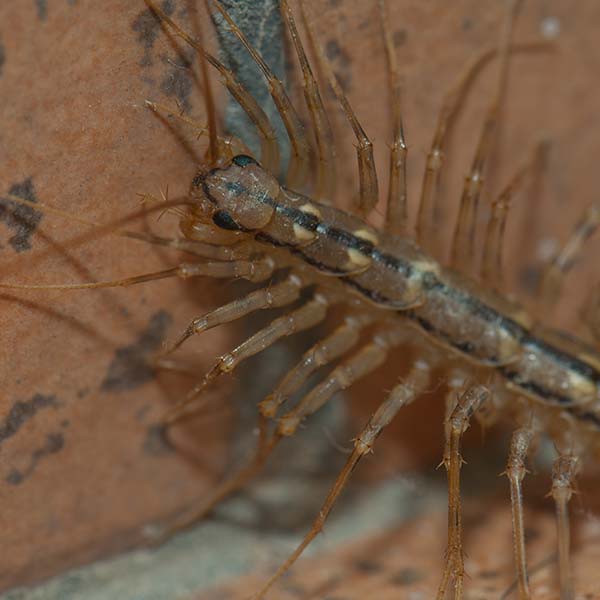Centipede Exterminator Services
Centipede Pest Control Services
When it comes to dealing with centipedes, they are many annoying qualities, such as:
- They multiply quickly
- They move at night
- They are very fast moving
These factors make it hard to notice them in your home, but what is even more concerning about centipedes is that they don’t come alone. These arthropods are exclusively predatory, so if you’ve got a centipede problem, you also have a spider, beetle, or other pest problem.
Centipedes are attracted to moist areas like bathtubs and basements, but they will also set up residence in closets or pantries when given a chance.
Contact Us Today!
To avoid the pests centipedes hunt, use these simple general pest prevention tips:
- Address moisture problems
- Mop hardwood floors
- Vacuum carpets
- Clean off countertops and other kitchen and dining room surfaces
- Limit the number of rooms you eat food to one or two
- Clean out your pet’s food and water bowls after every meal
- Store leftover food inside air-tight containers
Another important way to keep centipedes and various other pests out of your living areas is to seal the exterior properly. Starting from the ground up, fill gaps and cracks in your foundation using the following:
- Caulking
- Install door sweeps under doors leading out of your home
- Address problems with weatherstripping
- Repair damage to your home’s siding
- Fix ripped, torn, or improperly sealed window and door screens
- It also helps to keep unscreened doors and windows closed when they are not in use
Something to keep in mind with centipedes is that they will often invade to avoid adverse conditions outside. If it is particularly hot, cold, or stormy, centipedes will look for the closest place to find shelter and flock to nearby residential properties when given the opportunity.
If you’ve ever encountered a centipede or two and are searching for a centipede exterminator in Edmonton, look no further than pest control services at Ecopest. Our thorough methods ensure those annoying bugs won’t bug you any longer.

Centipede Facts
Centipedes are common animals of the soil and leaf litter. They are long (2-4 cm), flattened creatures with 15 to over 100 pairs of legs, one pair to each abdominal segment. The long, jointed legs provide for rapid movement. Long antennae are also characteristic. The most common species are greyish to reddish-brown.
Centipedes appear to overwinter as adults, laying their eggs in dirt or damp places throughout summer. It may take a year to reach maturity, and some live 5 to 6 years. People commonly find them in moist environments under boards, stones, piles of leaves, bark and crevices in damp soils. Because they lack the cuticular wax layer found in insects, they must live in areas where humidity is high. They are very secretive in habit, usually nocturnal, and run away when startled or exposed.
Centipede FAQs
FAQ – Frequently Asked Questions – Centipedes
Centipedes differ from millipedes by counting the number of legs arising from most body segments, whereas millipedes have two pairs, while centipedes bear one pair per segment, with the first pair of legs being fangs.
Most centipedes are carnivorous and prey upon soft-bodied insects, spiders, worms and other arthropods, including other centipedes. Centipedes detect prey through their antennae, which are covered with dense hairs.
Because centipedes feed on insects and other arthropods, eliminating their food sources is a step toward controlling centipedes. For this reason, it’s ideal for identifying all other pests inside houses and buildings before performing any pest control.
